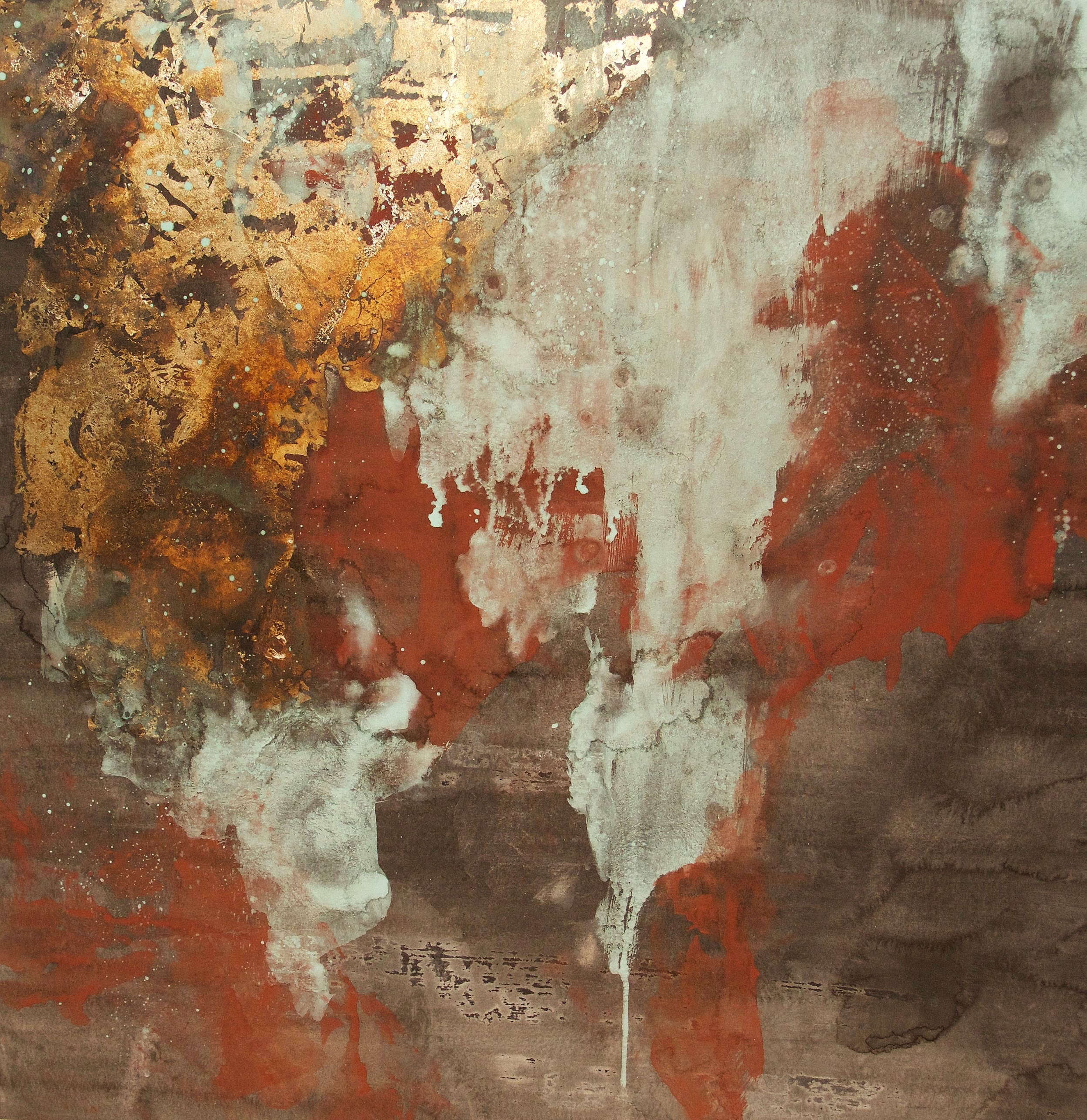NIHONGA
(nee-hon-guh)
...literally translated, means “Japanese-style painting”. It dates to around the 1890s and continues to be a beautiful, slow process art including hours of preparation before one ever begins to paint. Dry ground mineral pigments like lapis, azurite, malachite, and crushed dried oyster shells along with hundred year old pine soot ink called “sumi” are hand prepared, and then ultimately applied to woven paper or marble gesso. The paper itself is a wonder - kumohada, or “cloud skin” - still handmade by only a few remaining master crafts people in Japan.
The layers of pigment size vary from talc to sand or pumice. This allows them to reflect light differently and begs the eye to touch the work. The brush, the materials, and the surface relate, release and commune to speak.
Presence 54x44 sold
Layers of the Day 48x30 sold
Outpouring 33x74
Great is Thy Faithfulness I sold
Great is Thy Faithfulness II sold
Patina of Rain 30x30
Sky Mapping Series I 40x40 sold
Sky Mapping Series III 10x10
Gust of Wind 10x10
Three Rivers 33x47 sold
O'Sapientia (O'Antiphons series) 5"x5"
O'Oriens (O'Antiphons series) 5"x5"
O'Emmanuel (O'Antiphons series) 5"x5" not available












